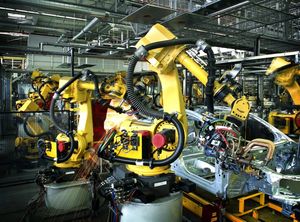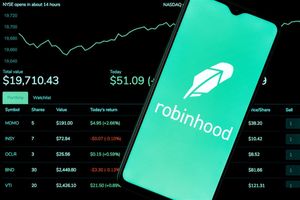
As the global economy marches towards the final quarter of 2025, investors find themselves at a pivotal juncture, balancing cautious optimism with an awareness of lingering uncertainties. Moderating inflation, divergent central bank policies, and persistent geopolitical tensions define a landscape where careful stock selection is paramount. Against this backdrop, five bellwether companies—NVIDIA, Apple, Eli Lilly, JPMorgan Chase, and Home Depot—stand out as crucial indicators, each poised to either capitalize on emerging trends or navigate significant headwinds, making them essential watches for the upcoming quarter.
The broader market sentiment for Q4 2025 reflects a nuanced picture. While global economic growth is projected to continue its resilient, albeit decelerating, trajectory, localized inflation dynamics and varying interest rate forecasts across major economies paint a complex canvas. The U.S. Federal Reserve, having initiated rate cuts, signals a shift towards prioritizing employment amidst a cooling job market. Conversely, the European Central Bank and Bank of Canada have aggressively eased policies, while the Bank of Japan anticipates further hikes. This monetary policy divergence, alongside robust consumer spending (albeit at a slower pace) and significant corporate investments in areas like AI, sets the stage for a quarter where company-specific catalysts and risks will play an outsized role in market performance.
What Happened and Why It Matters: A Deep Dive into Key Players
The selection of these five companies as top stocks to watch in Q4 2025 is predicated on their recent financial performance, strategic market positioning, and the anticipated impact of current economic and technological trends. Each represents a vital sector of the economy, offering a window into the broader market's health and direction.
NVIDIA (NASDAQ: NVDA) continues its meteoric rise, largely fueled by insatiable demand for its AI chips. The company reported record-breaking fiscal Q4 2025 revenues of $39.3 billion, a staggering 78% year-over-year increase, with its Data Center segment spearheading this growth. This exceptional performance underscores NVIDIA's dominant position in the burgeoning AI infrastructure market, projected to reach trillions by 2030. The upcoming Blackwell platform and anticipated Rubin architecture are expected to further solidify its leadership, making it a critical barometer for the tech sector's AI trajectory.
Apple (NASDAQ: AAPL), ever a consumer tech titan, delivered strong fiscal Q3 2025 results with revenue up 10% year-over-year to $94.0 billion, driven by robust iPhone and Services growth. The recent launch of the iPhone 17 series in September 2025 and the continued expansion of its high-margin Services segment (now 29% of total revenue) position Apple for a strong holiday quarter. However, the company faces intensifying regulatory pressures globally, particularly regarding its App Store policies, and mixed reception for its Vision Pro in a volatile China market, adding layers of complexity to its Q4 narrative.
Eli Lilly (NYSE: LLY) has emerged as a pharmaceutical powerhouse, primarily on the back of its blockbuster GLP-1 drugs, Mounjaro (for type 2 diabetes) and Zepbound (for obesity). The company's Q2 2025 revenue surged 38% year-over-year to $15.56 billion, with both drugs exceeding sales expectations and forecasted to be among the world's top sellers. With a robust pipeline, including the promising oral GLP-1 orforglipron nearing potential FDA approval, Eli Lilly is at the forefront of the exploding obesity and diabetes market. However, it must contend with aggressive competition and ongoing legal challenges regarding compounded versions of its drugs.
JPMorgan Chase (NYSE: JPM), a financial services giant, demonstrates continued resilience amidst an evolving interest rate environment. The bank passed the Federal Reserve's 2025 stress tests and raised its full-year 2025 guidance, projecting strong Q3 market revenue growth. Q2 2025 saw net income rise to $15.0 billion, driven by increases in average loans and deposits. Its diversified business model, coupled with a renewed optimism among U.S. small and midsize businesses (SMBs) fueling loan growth and robust investment banking activity, positions JPMorgan Chase as a key indicator of the financial sector's health and the broader economic stability entering Q4.
Home Depot (NYSE: HD) navigates a U.S. housing market characterized by modest gains and sensitivity to interest rates. While Q2 fiscal 2025 sales increased 4.9% year-over-year, the company's full-year guidance for 2025 suggests more subdued growth, with adjusted EPS projected to decline slightly. Home Depot's strategic emphasis on the professional contractor (Pro) segment, which now accounts for over 50% of sales and is bolstered by recent acquisitions like SRS Distribution and GMS Inc., is a critical differentiator. However, persistent inflation in building materials and cautious consumer spending on larger discretionary projects remain central to its Q4 outlook.
Potential Movers: Catalysts and Risks for Q4 2025
The performance of these five companies in Q4 2025 will hinge on a delicate balance of potent catalysts and notable risks, each with the potential to significantly sway investor sentiment and market valuations.
NVIDIA's primary catalyst is the continued, and likely accelerating, adoption of its Blackwell platform and the anticipated introduction of the Rubin architecture, which are expected to cement its lead in high-performance computing and AI. Sustained, aggressive capital expenditures by hyperscalers like Microsoft, Amazon, and Google for AI infrastructure will ensure robust demand. Furthermore, the company's comprehensive CUDA ecosystem and expansion into automotive and robotics offer diversification. However, significant risks loom, including intensifying competition from Advanced Micro Devices (NASDAQ: AMD) and Intel (NASDAQ: INTC), as well as in-house chip development by major tech firms. U.S.-China trade tensions and export restrictions continue to be a "wild card," potentially limiting a crucial market. Regulatory scrutiny over its market dominance and concerns about its elevated valuation also present notable risks.
For Apple, the strong initial demand for the iPhone 17 series, particularly the higher-margin Pro and Pro Max models, is a significant catalyst. The consistent, high-margin growth of its Services segment, fueled by an expanding installed base of active devices, provides a stable revenue stream. The ongoing integration of "Apple Intelligence" features throughout 2025 is expected to stimulate device upgrades. On the risk side, global regulatory pressures, including antitrust lawsuits from the U.S. Department of Justice and the EU's Digital Markets Act, could fundamentally alter its business model and impact services revenue. Estimated tariff costs of $1.1 billion for Q4 2025 and continued volatility in the China market, where intense local competition necessitates aggressive price cuts, remain key concerns.
Eli Lilly's catalysts are predominantly centered around its GLP-1 drug franchise. The expected positive Phase 3 data and potential FDA approval of its oral GLP-1 medication, orforglipron, by late 2025 for obesity, would be a game-changer, opening up a vast and convenient market. Billions of dollars in manufacturing capacity expansion are also expected to alleviate supply bottlenecks, allowing Mounjaro and Zepbound sales to accelerate further. Improving insurance coverage for obesity drugs could also significantly boost patient access. The main risks include persistent supply bottlenecks despite capacity investments, limiting the company's ability to fully meet demand. Intense competition from Novo Nordisk (NYSE: NVO) and other pharmaceutical players developing their own GLP-1s, along with ongoing legal battles against compounding pharmacies and telehealth companies, and an MDL concerning alleged side effects, pose both financial and reputational threats.
JPMorgan Chase benefits from a "flight to quality" phenomenon, where its substantial size and robust balance sheet attract investors seeking stability amid market volatility. The renewed optimism and expansion plans of U.S. SMBs present significant opportunities for corporate lending. The bank's massive annual investments in technology, including AI, are aimed at enhancing efficiency and market share. Anticipated global policy easing, with falling interest rates, could also drive economic expansion. Risks include the potential for persistent inflation and geopolitical uncertainties impacting overall economic activity. The bank's CFO has expressed caution regarding net interest income (NII) for 2025, anticipating sequential declines in NII with a trough possibly in mid-year, which could pressure profitability.
For Home Depot, easing mortgage rates due to Federal Reserve cuts are a critical catalyst, potentially encouraging homeowners to undertake larger, financed renovation projects that have been deferred. The strategic integration of recent Pro segment acquisitions (SRS Distribution and GMS Inc.) is expected to drive annual revenue growth through cross-selling and enhanced operational efficiencies. Continued investments in digital platforms and AI-powered logistics also aim to improve customer experience and efficiency. However, the prevailing high mortgage rates, despite some easing, continue to suppress housing market activity and consumer confidence for large discretionary projects. Persistent inflation in building materials and potential new tariffs could lead to increased costs and margin pressure. Increased operating expenses due to strategic investments also pose a near-term risk to profit margins.
Industry Impact and Broader Implications
The trajectories of these five companies in Q4 2025 extend far beyond their individual balance sheets, sending ripple effects across their respective industries and the broader global economy.
In the technology sector, NVIDIA's continued dominance in AI chips underscores the foundational role of specialized hardware in the current AI revolution. Its performance will dictate the pace of AI infrastructure build-out for cloud service providers and enterprises, influencing everything from data center investments to the speed of generative AI development. Simultaneously, Apple's navigation of regulatory pressures, particularly the Digital Markets Act in the EU and antitrust lawsuits in the U.S., will set precedents for how tech giants operate their platform ecosystems and manage their app stores. Any mandated changes forcing greater openness could reshape business models across the software and services industry, potentially benefiting smaller developers but impacting Apple's lucrative services revenue. The competitive landscape for AR/VR, as evidenced by Vision Pro's mixed reception, indicates a still-nascent market where mass adoption remains a long-term goal.
The pharmaceutical industry is experiencing a seismic shift driven by the explosion of the obesity and diabetes drug market, largely spearheaded by Eli Lilly and Novo Nordisk. Lilly's success with Mounjaro and Zepbound highlights the immense potential of GLP-1 receptor agonists and intensifies the race for next-generation treatments, including oral formulations like orforglipron. This market's growth incentivizes massive R&D spending across the sector, but also raises critical questions about drug pricing, insurance coverage, and the societal burden of chronic diseases. The legal challenges faced by Lilly concerning compounded versions of its drugs underscore the broader industry's fight to protect intellectual property and ensure patient safety against unregulated alternatives, potentially influencing regulatory enforcement and consumer perception.
Within the financial services sector, JPMorgan Chase's performance offers crucial insights into the health of the U.S. and global economies. Its loan growth, particularly among SMBs, indicates economic confidence at the grassroots level. The stability of its investment banking activities suggests a resilient capital markets environment, despite broader macroeconomic uncertainties. As central banks diverge in their interest rate policies, JPMorgan's ability to manage its net interest income (NII) will be a bellwether for other large banks. Jamie Dimon's cautious stance on geopolitical risks and inflation reflects a broader sentiment among financial leaders, suggesting that while the economy remains robust, vigilance against systemic shocks is paramount. Regulatory discussions around capital requirements and antitrust scrutiny in the banking sector also remain ongoing, with potential implications for industry structure.
The retail and housing sectors are intrinsically linked to Home Depot's fortunes. The U.S. housing market's slow but steady navigation of higher interest rates, coupled with modest home price growth, directly impacts renovation spending. Home Depot's strategic pivot towards the Pro segment reflects a broader industry trend of professional contractors driving a significant portion of home improvement demand, signaling a more resilient revenue stream than volatile DIY spending. The ongoing inflation in building materials, exacerbated by potential tariffs on imports like steel, aluminum, and copper, highlights persistent supply chain challenges and cost pressures across the construction industry. This environment necessitates robust inventory management and pricing strategies for retailers and contractors alike, with potential ripple effects on housing affordability and project timelines.
The Road Ahead: What Comes Next
Looking beyond the immediate horizon of Q4 2025, the strategic maneuvers and market performance of these five companies will offer significant clues about the short-term and long-term trajectory of the global economy and key industries.
In the short term, NVIDIA's ability to manage escalating competition and navigate U.S.-China trade tensions will be paramount. Any significant deviation from its projected hyper-growth in AI chip sales could trigger market corrections in the tech sector. For Apple, the adoption rate of the iPhone 17 and the ultimate impact of regulatory decisions on its Services revenue model will be closely watched. A successful integration of AI features that genuinely resonate with consumers could reinvigorate upgrade cycles. Eli Lilly's oral orforglipron trial results and subsequent FDA approval are critical near-term catalysts, potentially revolutionizing the accessibility of obesity treatment. Manufacturing capacity will remain a constraint, and its scaling efforts will be key. JPMorgan Chase will need to carefully manage its NII amid fluctuating interest rates and continue to capitalize on strong investment banking activity, while Home Depot's integration of its Pro acquisitions and its ability to attract deferred home improvement demand as mortgage rates potentially ease further will define its immediate future.
Long-term possibilities include NVIDIA broadening its AI ecosystem beyond data centers into robotics, autonomous vehicles, and enterprise AI, establishing even deeper market entrenchment. Apple may need to strategically pivot its revenue generation in response to regulatory pressures, potentially exploring new hardware categories or diversifying its services beyond its current ecosystem, while also expanding manufacturing resilience outside of China. Eli Lilly is poised to maintain its leadership in the GLP-1 market, with sustained R&D for next-generation treatments, but it must prepare for increased generic competition in the distant future and further expand global access to its life-changing therapies. JPMorgan Chase will likely continue its significant investments in technology and expand its global footprint, solidifying its position as a diversified financial powerhouse capable of weathering various economic cycles. For Home Depot, the long-term strategy of deepening its relationship with the Pro segment, leveraging a comprehensive omnichannel experience, and focusing on sustainable home improvement trends will be crucial for sustained growth, irrespective of shorter-term housing market fluctuations.
Conclusion: Navigating Q4 2025
The final quarter of 2025 promises to be a period of significant market activity, driven by a confluence of macroeconomic forces and company-specific developments. The five companies highlighted—NVIDIA, Apple, Eli Lilly, JPMorgan Chase, and Home Depot—represent diverse sectors and offer a compelling narrative of the opportunities and challenges facing the global economy.
In summary, NVIDIA stands as the undisputed leader in the AI revolution, its growth tied to the insatiable demand for processing power, though challenged by competition and geopolitical risks. Apple demonstrates remarkable resilience with its iPhone and Services, yet faces a critical juncture with regulatory scrutiny and market maturation. Eli Lilly is transforming the pharmaceutical landscape with its GLP-1 drugs, but must overcome supply constraints and intense competition. JPMorgan Chase exemplifies financial strength and diversification, navigating evolving interest rate policies and supporting a resilient, albeit cautious, economic expansion. Finally, Home Depot leverages its robust Pro segment amidst a nuanced housing market, adapting to shifts in consumer spending and inflationary pressures.
Moving forward, investors should closely monitor several key indicators. For tech, the pace of AI innovation and the resolution of antitrust cases will be crucial. In pharma, the expansion of GLP-1 coverage and the emergence of new treatments will dictate market share. Financials will be guided by central bank rate decisions and overall credit quality, while retail and housing will reflect consumer confidence and mortgage rate trends. The lasting impact of Q4 2025 will likely be defined by how these industry leaders adapt to technological advancements, regulatory mandates, competitive pressures, and evolving economic realities, setting the stage for 2026 and beyond.





